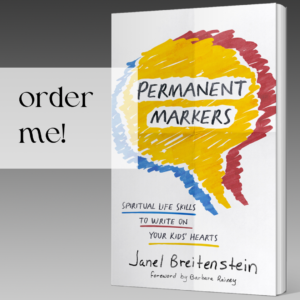I love what Kathleen Kelly, aka Meg Ryan, says in You’ve Got Mail–because for this lifetime, voracious reader, it’s true: “When you read a book as a child, it becomes a part of your identity in a way that no other reading in your life does.”
So much of reading at this point in life is to help our kids “get the bug”–to make them lifelong readers who associate delicious experiences with books. May these ideas help you to construct adventure-filled memories together!
Reading with them: such a great time to experience stories together, discuss a broad variety of topics, introduce your child to literature beyond what they can read on their own, and improve vocabulary!
1. Make a “nest” of pillows, blankets, and cushions.
2. Talk about the decisions characters are making. “What would you do? Do you think they did the right thing? What’s the Bible say?”
3. “If you could be in this picture, where would you like to be?”
4. For wonderful lists of classic books to read together, check out Justin Taylor’s list for grades 1-8 and Sonlight’s read-alouds for ages 3-14.
5. Count objects in pictures.
6. Read picture books that teach kids character values.
7. “How do you think he (or she) feels?”
8. Give them something to find in the picture, or a word to find on the page.
9. “What do you think will happen next?”
10. Together, make a food you read about! Like pancakes for dinner after reading The Story of Little Babaji, or an apple pie after An Apple Pie for Dinner, or your own version of Stone Soup (Aladdin Picture Books)
.
11. Let your kids dress up in costume and recreate a play about the book.
Talk about application points from the book. “What should we do based on what we learned? What does this idea look like in real life?”
12. Use a highly successful, simple method known as “print referencing” to get your toddler or preschooler to focus on words on the page–which is proven to result in dramatically better reading skills.
13. With your own children, use this time as “lotion time” to tenderly rub their backs, hands, or bottoms of their feet with lotion–scented, if possible, imbed those positive memories even better.
14. “What did you think of the story? Did you like it? Why?”
15. Notice language and illustrations together, modeling interactive reading. Do you like how an author said something? What did the artist use to make that illustration, or what do you like about it?
16. Have grandparents or relatives read books over FaceTime or Skype (bedtime is great for this!).
17. When possible, make sure both parents spend time reading with them. Keep your children from associating reading with a particular gender role (e.g. “Men don’t read”).
18. Create a simple reading nook (sometimes with something as easy as a tension rod and a sheet between the wall and existing furniture).
19. Use “book basket” time: Make a basket of books on a certain topic, and for 10-15 minutes, kids read from the basket.
20. Have kids make masks of their favorite characters.
21. On the internet, look up details about the life of a favorite author.
22. Ask great questions like these to help a toddler or preschooler achieve maximum interactions with the book.
23. My kids love cuddling on the sofa or front porch with mugs of tea while we read. I love that this surrounds our reading time with even more positive memories–and relaxes me, too.
In their own reading time:
24. Help your child look up more books by his or her favorite author–and after that, use Amazon’s “other customers bought” feature to look up books similar to the ones your child likes.
25. Some of the best, simplest advice we received as parents of young kids was to let our kids read by lamplight to fall asleep. We started this with picture books and audio books, though now stacks of chapter books are always tilting beside and around our kids’ beds. (Audio books are played throughout the day, especially during Lego construction or even our tightly controlled screen time; it’s as if our kids were being read to throughout the day.)
This helps our (wired) kids settle themselves down, and it makes reading a privilege, staving off bedtime for just a few…more…drowsy…minutes. More than anything, it helped cement our kids as readers. Now we have to poke our heads in with a “last chapter!” reminder to stop them and get them some sleep!
26. Circulate fascinating, kid (and adult-!)-friendly coffee table books for kids in your stack in the living room. On my table right now:
Art Up Close: From Ancient to Modern: an awesome seek-and-find in major artwork!
Masterpieces Up Close: Western Painting from the 14th to 20th Centuries: The kids and I liked it so much I got another one!
Animalium (Welcome to the Museum)
Maps: my kids can’t get enough of these amazing illustrations!
Into the Unknown: How Great Explorers Found Their Way by Land, Sea, and Air
The Story of Buildings: From the Pyramids to the Sydney Opera House and Beyond
Other classics pretty enough for the table, and still great enough for us to curl up and share on our own or together:
The Book of Virtues: My kids love this at bedtime.
HarperCollins Treasury of Picture Book Classics: A Child’s First Collection
Where the Sidewalk Ends: Poems and Drawings
A Light in the Attic Special Edition
The 20th-Century Children’s Book Treasury: Picture Books and Stories to Read Aloud
The Children’s Book of HeroesAny from this series is great!
On my wish list:
Nature Anatomy: The Curious Parts and Pieces of the Natural World
Farm Anatomy: The Curious Parts and Pieces of Country Life
27. For kids reticent to read, help them find that one thing they will read. Maybe it’s The Action Bible, The Essential Calvin and Hobbes, Star Wars: Jedi Academy, or Smile. Even those old Babysitter’s Club books, like Kristy’s Great Idea: Full Color Edition (The Baby-Sitters Club Graphix #1), are now available as graphic novels! Read some pages together to get them started.
28. Are you making the most of your library’s website? We download about a down a week, and my kids love that they can read books on a tablet. It also means you can do it even without schlepping to the library, or losing six of them under the bed (and how did that one get in his underwear drawer?). Help your kids create a wish list that they can easily access.
29. Begin an easy incentive program for your kids (remember Book It! from elementary school?). I created an uber-basic document–a “reading race”–after which my kids get a small bonus for every five books at their level (confession: It’s candy. Hey, less calories than pizza…) and a small prize after forty books (like a $5 Amazon card, a small Lego set, or a movie night with Dad). I’ll let you DOWNLOAD IT FREE HERE (but you can’t make fun of my super-lame graphic skills on this one, ‘kay? Consider it utilitarian.)
30. Check out your library’s storytimes and other activities, helping your kids to love this unbelievable resource in your community (in a country without them, I sorely feel this loss).
31. Pick out some fun chapter books for your kids, like The Candymakers, Escape from Mr. Lemoncello’s Library, Out of My Mind, or Wonder. My tip: I read just the first couple of chapters to my kids…and more times than not, I find them reading ahead on their own, finishing the book long before I ever could. Think of it as a movie trailer of sorts.
32. Talk with your kids about what you’re reading and what they’re reading, and about how it makes you think. Help the enjoyment of reading and finding knowledge to be a part of the culture of your family.
Help us out! What do you do to make the most of reading with your child?
(Note: This post contains affiliate links, which help fund our work here in Uganda at no additional cost to you.)
Like this post? Please share with others!
.









3 Comments
Free printable! 32 Ways to Make the Most of Reading with Kids | a generous grace - 10 years ago
[…] celebration of “literacy” (see previous post!)–if you enjoyed this earlier post, you might enjoy this free printable with 32 different ideas to make the most of reading with […]
26 Super-practical parenting hacks | a generous grace - 10 years ago
[…] Let kids read books by lamplight in bed until they fall asleep. […]
4+ Ways to Get More Out of Summer with Kids - THE AWKWARD MOM - 10 years ago
[…] 32 Ideas to make the most of reading time with kids (includes free download) […]